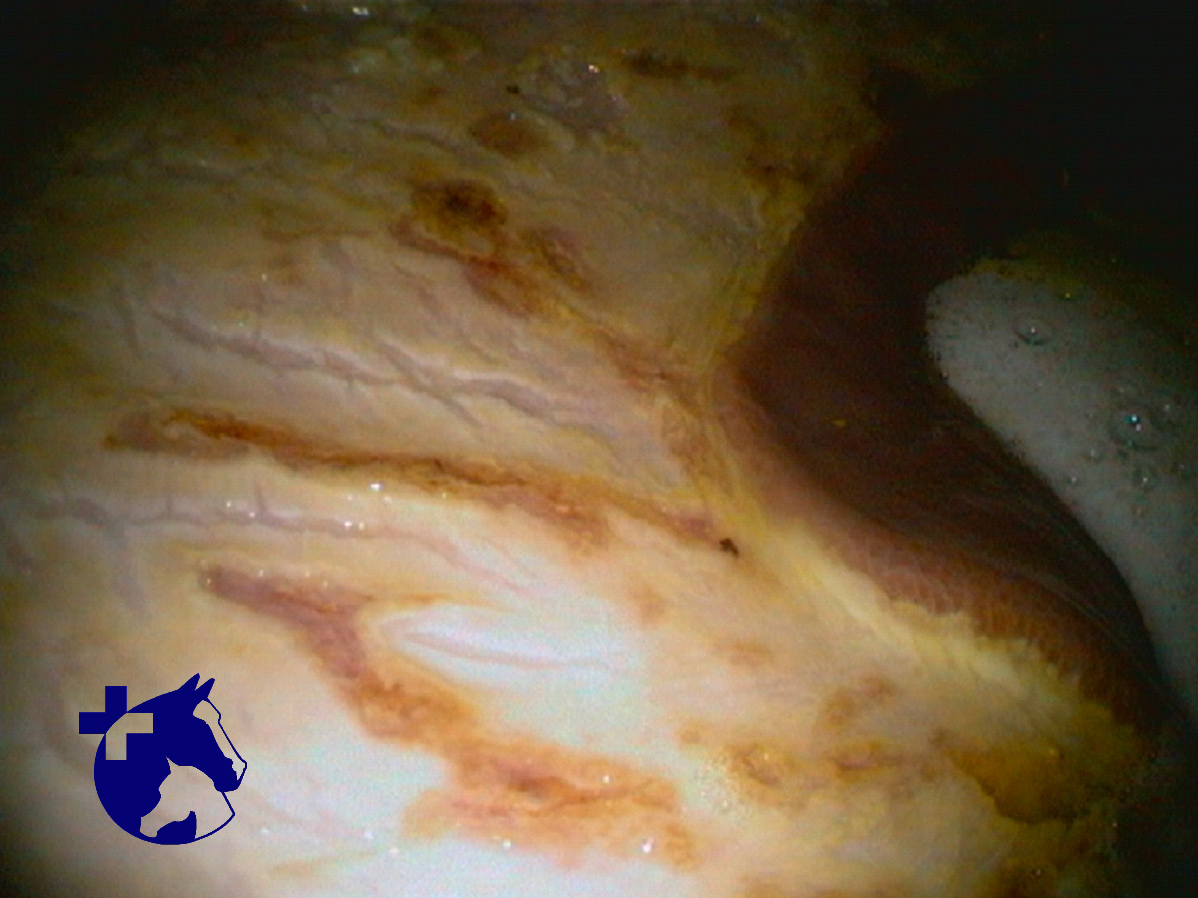
Gastric ulcers in horses, what to do?
Horses are prone to gastric ulcers. Although the symptoms can be vague sometimes, gastric ulcers can decrease the comfort in foals and adult horses and can cause poor performance. Research shows that even horses without obvious symptoms can have a mild degree of gastric ulcers. Especially horses that are in (heavy) training are susceptible to this condition.
Gastroscopy – using a scope through the nose to look in the stomach – is the only method to diagnose gastric ulcers and the severity of the damage. Prevention and treatment of gastric ulcers are important to keep the horses in optimal condition.
Why do horses get ulcers?
Gastric ulcers are in fact erosion at the level of the mucosa of the stomach. The stomach wall gets affected by gastric acid, which causes disappearing of the first layer of the stomach wall. Many causes and predisposing factors have been described in the horse, but it would mainly be a combination of various factors that cause these ulcerations. Unlike in humans, where bacterial infections with Helicobacter pylori play a role, this has not been demonstrated in horses.
The stomach mucosa consists of two parts, which are divided by what is called the margo plicatus (see Fig. 1). The glandular part is responsible for the production of gastric acid and digestive enzymes. The non-glandular part (squamous part) of the stomach consists of a protective layer of keratinized cells. Unlike the non-glandular part, the glandular part is able to protect itself against the digestion and acids by production of mucus and other substances, and also by a good blood circulation.

Gastric ulcers can occur in both parts of the stomach when the acid production is too high or when the protective mechanisms are impeded. The margo plicatus is the place where gastric ulcers are most often found (see Fig. 2).
In horses the production of gastric acids happens continuously, in contrary to humans where the production is only triggered when eating (see Fig. 2). That is why a continuous intake of food, and mostly fiber, is very important. The fibers have a buffering effect on the acid in the stomach (see Fig. 3). In contrary, grain and a high level of sugar and starch in the food will cause an increased production of acids in the stomach, especially when they are given in high amounts per meal.
Horses that are intensively and strenuous trained, are more sensitive to gastric ulcers. Trotters, racehorses and endurance horses are the population with the most problems. According to research, until 70% of these horses have gastric ulcers.
Stress (transport, illness,…) and anti-inflammatory agents also reduce the protective capacity of the glandular part, what causes an increased risk of gastric ulcers.
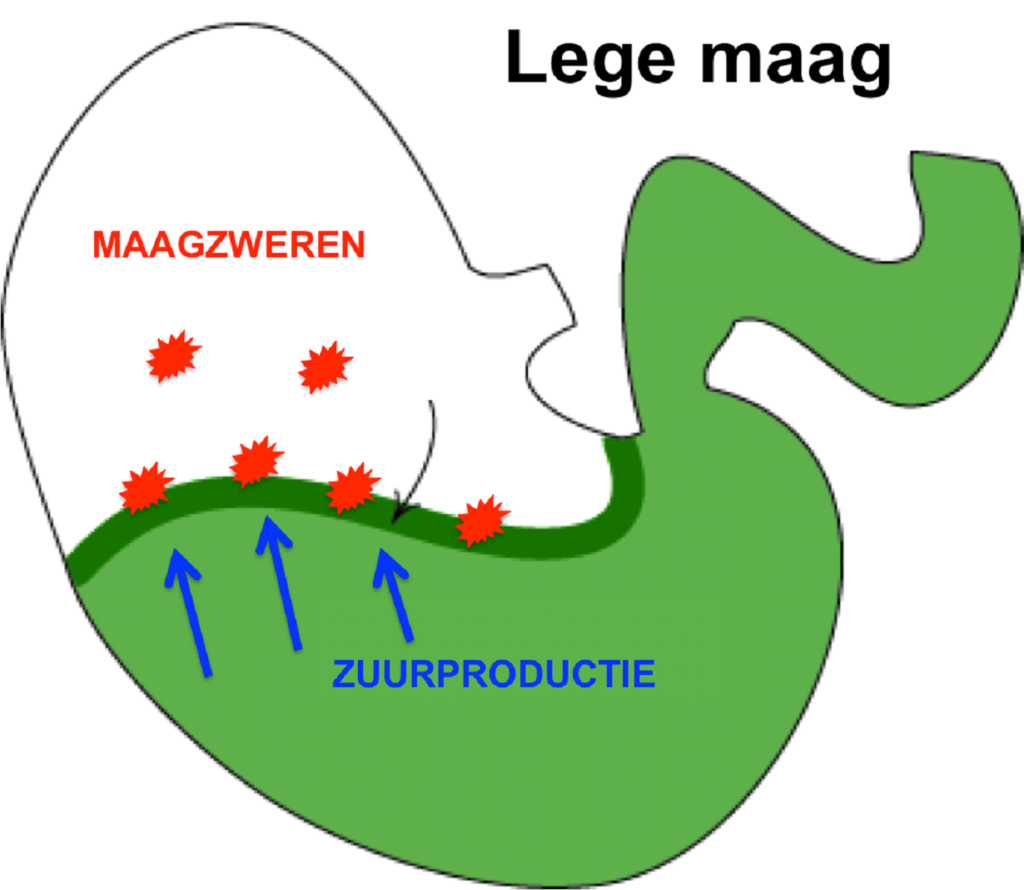
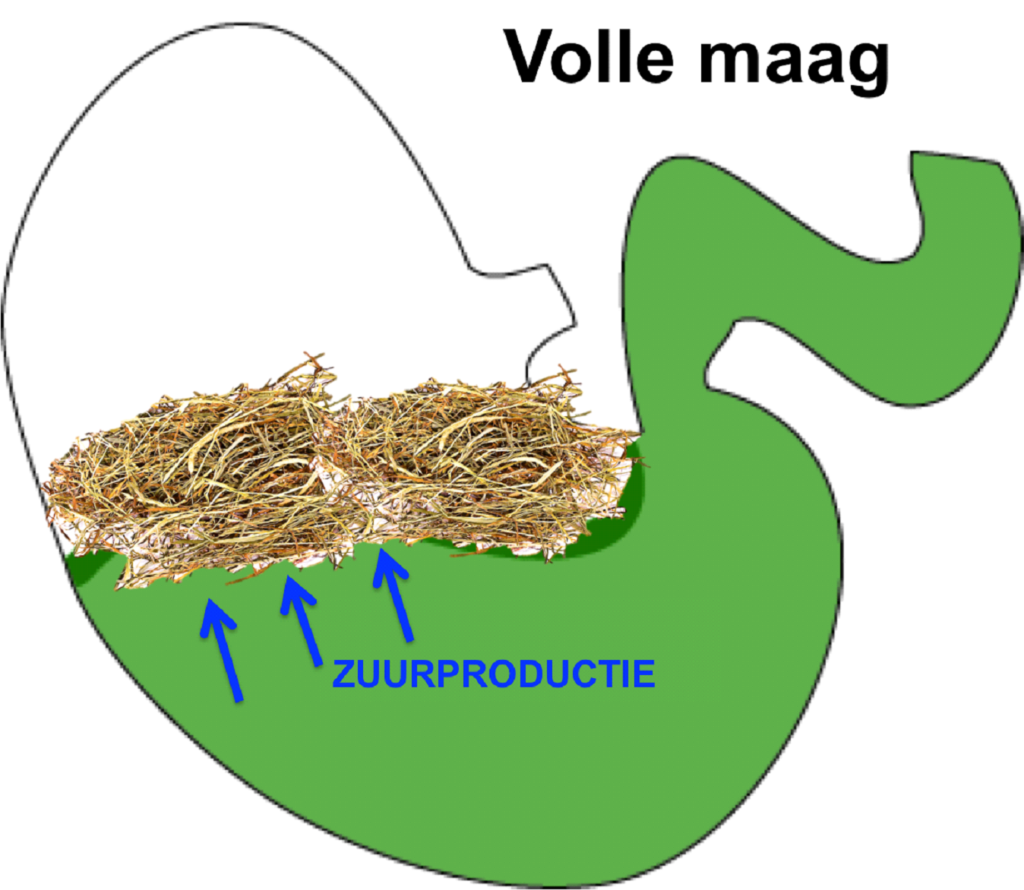
Symptoms
The symptoms of gastric ulcers are vague and not always well recognized. A lot of horses with gastric ulcers have only subclinical symptoms that can stay unnoticed. There is also a difference in symptoms between adult horses and foals.
Adult horses with gastric ulcers can have a decreased appetite, dullness, changes in behaviour (e.g. biting, flehmen), losing weight, discomfort after eating, poor performance, grinding and hypersalivation.
Diagnosis
For the moment, gastroscopy is the only reliable method to diagnose gastric ulcers and to follow up the effect of the treatment. Hereby you go with a scope (camera) via the nose in the oesophagus until you are in the stomach. To do this, the horse has to be starved for at least 12 hours and can’t drink in the last hours before gastroscopy. At the moment of the gastroscopy, the horse has to be sedated. Once the scope is in the stomach, air is blown to enlarge the stomach and to inspect the stomach wall. The complete stomach wall will be inspected to see lesions in both parts of the stomach (see Fig. 4, 5, 6, 7).
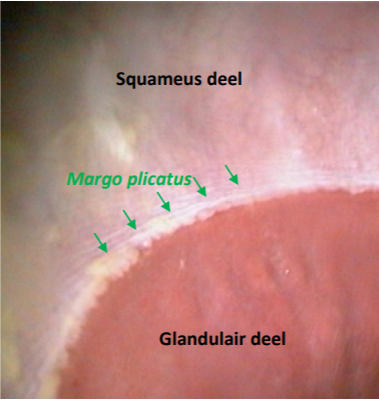
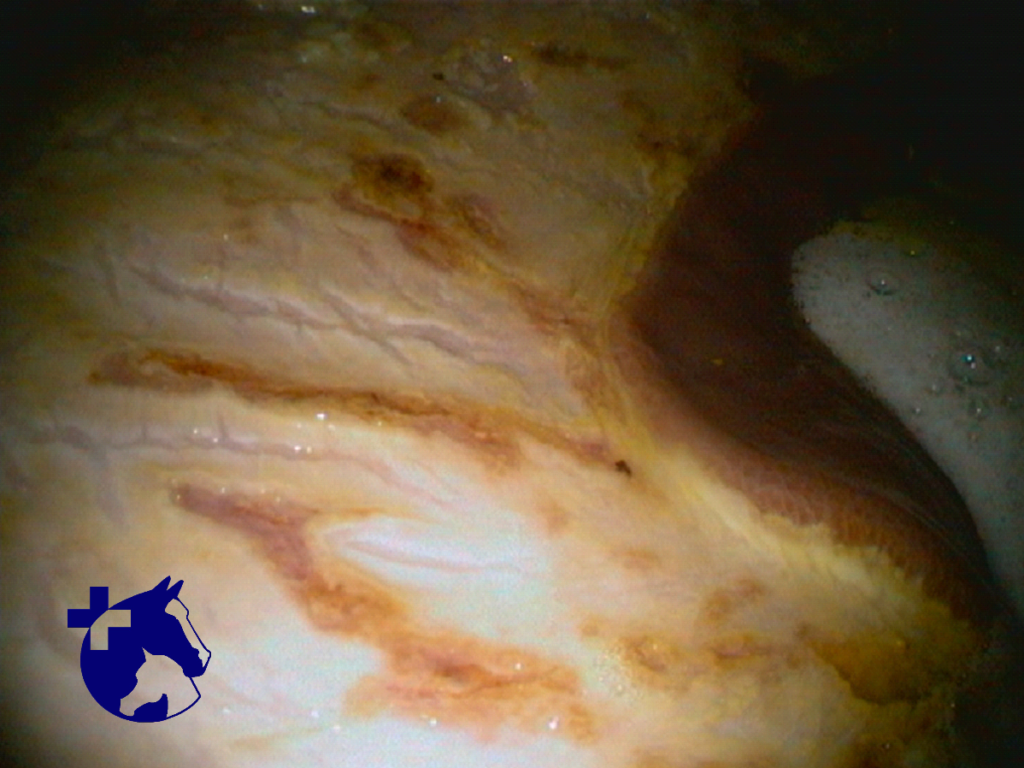
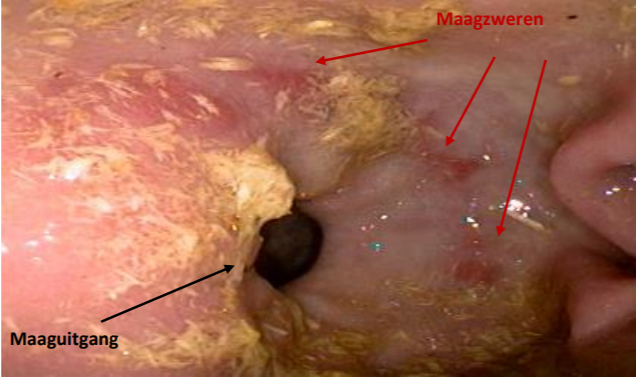

Treatment and prevention
The treatment of gastric ulcers consists of the administration of medications that reduce the production of gastric acids on the one hand, and dealing with the different predisposing factors on the other.
Medication
There are different medications that reduce the production of gastric acids. Omeprazole is the most researched and used inhibitor for gastric acids in horses. Omeprazole (Gastrogard®, Ulcergold®, Pepticure®…) can be given as a paste, the amount depending on the weight of the horse. It has to be given once a day, preferable in the morning when the horse didn’t eat yet. The localisation and severity of the lesions will determine the duration of the treatment and if there are other medications necessary as well.
The only way to verify the success of the treatment, is by repeating the gastroscopy. So follow-up of a horse with gastric ulcers is very important for the healing process.
Diet and management
It is important to pay attention to the management of the horse for prevention of gastric ulcers.
As mentioned above, the diet of the horse plays an important role. Ideally the horse gets daily unlimited access to good quality roughage like hay, haylage, grass,… Research demonstrates that straw is not a suitable source of roughage for horses with gastric ulcers.
Care must be taken with concentrate; the amounts should be limited to what the horse really needs, and it should be given over multiple small doses, to limit the amount of sugar and starch per meal. There can also be chosen for more fiber-rich products that contain less sugar than the classis concentrates. Follow the advice of your vet to adjust the food plan correctly.
It is also advised to reduce the stress as much as possible and to adjust the training to the condition of the horse. Allow your horse to have frequent and long access to the field and direct contact with other horses.
Any questions about gastric ulcers in horses?
Would you like to have your horse examined?
Contact our internal medicine experts
by phone 02 454 10 00 or mail: info@demorette.be
